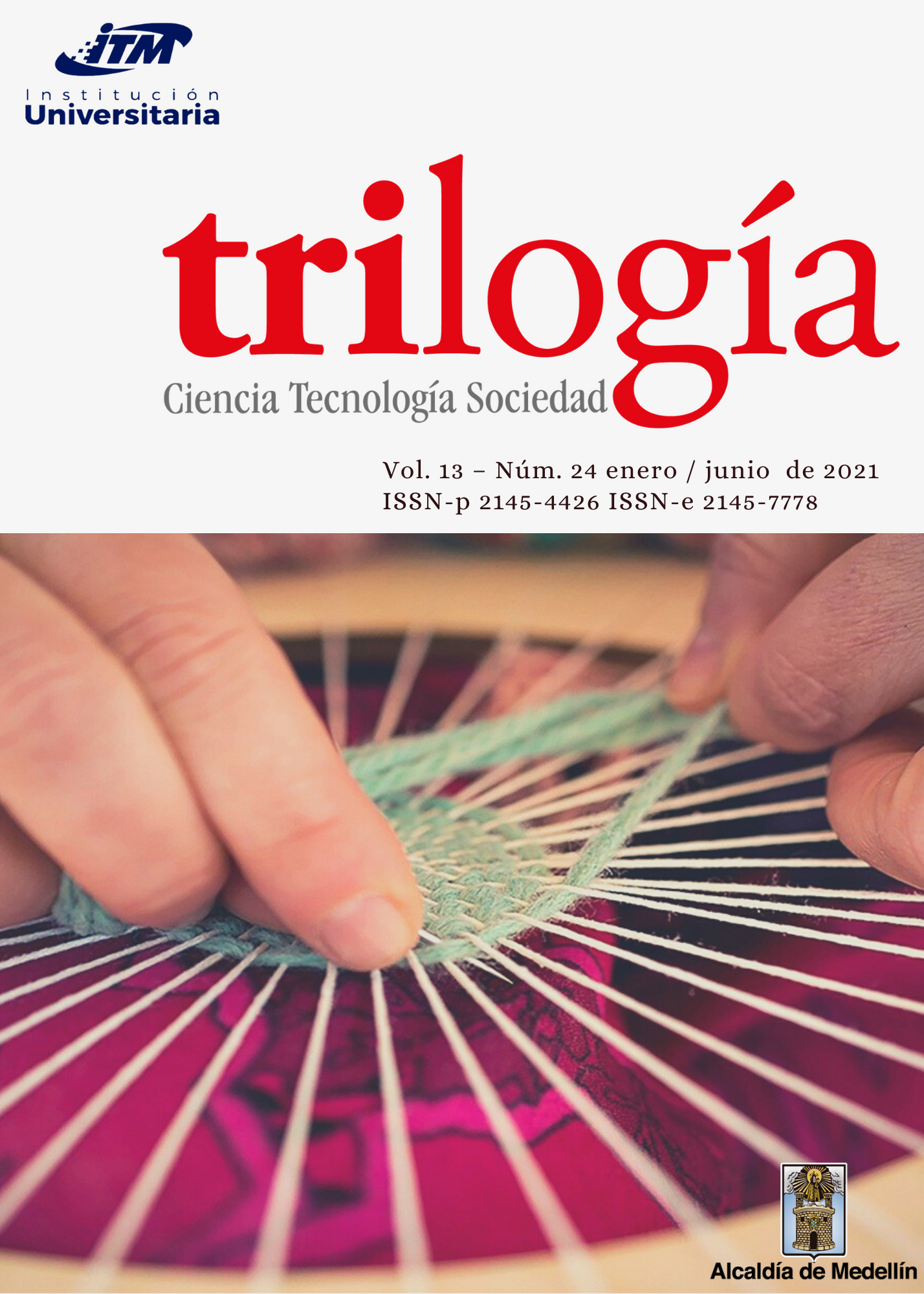Panthera Onca Corridors: A Spatially Explicit Analysis of Habitat Change Drivers and Potential Conservation Areas in the Bajo Magdalena, Colombia
Abstract
The distribution range of Jaguar (Panthera onca) is being reduced due to multi-scale habitat conversion, intensive hunting, illegal trafficking, habitat fragmentation, and the construction of highways and other infrastructure. Because of the decrease in population, this species’ listing has changed from vulnerable to a threatened category. Due to the ecological importance of this species, organizations like Red Colombiana de Seguimiento de Fauna Atropellada have proposed the establishment of wildlife corridors. But little is known as to recognize the driving forces in these habitat changes and where these corridors should be established. To address this lack of information, we determined the spatial extent to which the current distribution and access to P. onca habitat is being driven by deforestation, armed conflict, agriculture expansion, urbanization and the construction of highways in the Bajo Magdalena area of Colombia. We then identified potential areas for proposing conservation corridors. To do this, we used available geospatial information on P. onca distribution in the Corporación Autónoma Regional areas in the municipalities of Puerto Salgar, Caparrapí and Guaduas, as well as transportation network, administrative unit, and deforestation data from 2010 to 2018. We also calculated habitat distances to population centers and the distribution of P. onca relative to roads. Our findings suggest that urban population and highways affect 83 % of the total area of its distribution; deforestation increased by 47.9 km2 in the 105.24 km2 study area with 5.6 km2 alone left as P. onca habitat. We concluded that conservation initiatives must be implemented inside P. onca’s distributional range and buffer zones. Urbanization and the construction of highways were highly influential variables associated with the loss of P. onca habitat. Further, we propose that precautions along the principal road that connects Puerto Salgar and Guaduas should be taken into consideration to maintain the genetic flow and movement of the P. onca population as it affects 87 km of this proposed corridor.
References
Benítez Gutiérrez, A. M. (2010). Aproximaciones del hábitat potencial para jaguar (Panthera onca) en la Región Caribe colombiana (Tesis de maestría). http://hdl.handle.net/11554/4515
Boron, V.; Deere, N. J.; Xofis, P.; Link, A.; Quiñones-Guerrero, A.; Payan, E.; Tzanopoulos, J. (2019). Richness, diversity, and factors influencing occupancy of mammal communities across human-modified landscapes in Colombia. Biological conservation, v. 232, 108-116. https://doi.org/10.1016/j.biocon.2019.01.030
Boron, V.; Tzanopoulos, J.; Gallo, J.; Barragan, J.; Jaimes-Rodriguez, L.; Schaller, G.; Payán, E. (2016). Jaguar Densities across Human-Dominated Landscapes in Colombia: The Contribution of Unprotected Areas to Long Term Conservation. PloS One, v. 11, n. 5, 1-14. https://doi.org/10.1371/journal.pone.0153973
Boron, V.; Xofis, P.; Link, A.; Payan, E.; Tzanopoulos, J. (2018). Conserving predators across agricultural landscapes in Colombia: habitat use and space partitioning by jaguars, pumas, ocelots and jaguarundis. Oryx, v. 54, n. 4, 554-563. https://doi.org/10.1017/S0030605318000327
Castillo Martínez, L. S. (2016). Plan de conservación de los felinos silvestres del territorio CAR. Corporación Autónoma Regional de Cundinamarca. http://hdl.handle.net/20.500.11786/35787
Castro-Nunez, A.; Mertz, O.; Sosa, C. C. (2017). Geographic overlaps between priority areas for forest carbon-storage efforts and those for delivering peacebuilding programs: implications for policy design. Environmental Research Letters, v. 12, n. 5, 1-11. http://doi.org/10.1088/1748-9326/aa6f20
Departamento Administrativo Nacional de Estadística. (2018). Marco Geoestadístico Nacional. https://geoportal.dane.gov.co/servicios/descarga-y-metadatos/descarga-mgn-marco-geoestadistico-nacional/
Figel, J. J.; Botero-Cañola, S.; Forero-Medina, G.; Sánchez-Londoño, J. D.; Valenzuela, L.; Noss, R. F. (2019). Wetlands are keystone habitats for jaguars in an intercontinental biodiversity hotspot. PloS One, v. 14, n. 9, 1-16. https://doi.org/10.1371/journal.pone.0221705
Gese, E. M.; Terletzky, P. A.; Cavalcanti, S. M. C.; Neale, C. M. U. (2018). Influence of behavioral state, sex, and season on resource selection by jaguars (Panthera onca): Always on the prowl? Ecosphere, v. 9, n. 7, 1-16. https://doi.org/10.1002/ecs2.2341
Haag, T.; Santos, A. S.; Sana, D. A.; Morato, R. G.; Cullen Jr, L.; Crawshaw Jr, P. G.; De Angelo, C.; Di Bitetti, M. S.; Salzano, F. M.; Eizirik, E. (2010). The effect of habitat fragmentation on the genetic structure of a top predator: loss of diversity and high differentiation among remnant populations of Atlantic Forest jaguars (Panthera onca). Molecular Ecology, v. 19, n. 22, 4906-4921. https://doi.org/10.1111/j.1365-294X.2010.04856.x
Hansen, M.; Potapov, P.; Margono, B.; Stehman, S.; Turubanova, S.; Tyukavina, A. (2014). Response to Comment on “High-resolution global maps of 21st-century forest cover change”. Science, v. 344, n. 6187, 981. https://doi.org/10.1126/science.1248817
Marchini, S.; Macdonald, D. W. (2012). Predicting ranchers’ intention to kill jaguars: Case studies in Amazonia and Pantanal. Biological Conservation, v. 147, n. 1, 213-221. https://doi.org/10.1016/j.biocon.2012.01.002
Pardo-Vargas, L. E.; Payán-Garrido, E. (2015). Mamíferos de un agropaisaje de palma de aceite en las sabanas inundables de Orocué, Casanare, Colombia. Biota Colombiana, v. 16, n. 1, 54-66. http://revistas.humboldt.org.co/index.php/biota/article/view/367
Payán, E.; Castaño-Uribe, C.; González-Maya, J. F.; Valderrama, C.; Ruiz-García, M.; Soto, C. (2010). Distribución y estado de conservación del jaguar en Colombia. En E. Payán Garrido; C. Castaño-Uribe (editores), Grandes felinos de Colombia (Vol. I, pp. 23-36). Panthera Colombia.
Petracca, L. S.; Hernández-Potosme, S.; Obando-Sampson, L.; Salom-Pérez, R.; Quigley, H.; Robinson, H. S. (2014). Agricultural encroachment and lack of enforcement threaten connectivity of range-wide jaguar (Panthera onca) corridor. Journal for Nature Conservation, v. 22, n. 5, 436-444. https://doi.org/10.1016/j.jnc.2014.04.002
Prem, M.; Saavedra, S.; Vargas, J. F. (2020). End-of-conflict deforestation: Evidence from Colombia’s peace agreement. World Development, v. 129, 1-11. https://doi.org/10.1016/j.worlddev.2019.104852
Quigley, H.; Foster, R.; Petracca, L.; Payan, E.; Salom, R.; Harmsen, B. (2017). Panthera onca (errata version published in 2018). The IUCN Red List of Threatened Species 2017: e.T15953A123791436. https://doi.org/10.2305/IUCN.UK.2017-3.RLTS.T15953A50658693.en
Rabinowitz, A.; Zeller, K. A. (2010). A range-wide model of landscape connectivity and conservation for the jaguar, Panthera onca. Biological conservation, v. 143, n. 4, 939-945. https://doi.org/10.1016/j.biocon.2010.01.002
Ramírez Delgado, J. P.; Galindo García, G.; Yepes Quintero, A. P.; Cabrera Montenegro, E. (2018). Estimación de la degradación de bosques de Colombia a través de un análisis de fragmentación. http://documentacion.ideam.gov.co/openbiblio/bvirtual/023784/023784.html
Roques, S.; Sollman, R.; Jácomo, A.; Tôrres, N.; Silveira, L.; Chávez, C.; Keller, C.; Mello do Prado, D.; Carignano Torres, P.; Jorge dos Santos, C.; Bernardes Garcia da Luz, X.; Magnusson, W. E.; Godoy, J. A.; Ceballos, G.; Palomares, F. (2016). Effects of habitat deterioration on the population genetics and conservation of the jaguar. Conservation genetics, v. 17, n. 1, 125-139. https://doi.org/10.1007/s10592-015-0766-5
Thornton, D.; Zeller, K.; Rondinini, C.; Boitani, L.; Crooks, K.; Burdett, C.; Rabinowitz, A.; Quigley, H. (2016). Assessing the umbrella value of a range‐wide conservation network for jaguars (Panthera onca). Ecological Applications, v. 26, n. 4, 1112-1124. https://doi.org/10.1890/15-0602
Zárrate-Charry, D. A.; Massey, A. L.; González-Maya, J. F.; Betts, M. G. (2018). Multi-criteria spatial identification of carnivore conservation areas under data scarcity and conflict: a jaguar case study in Sierra Nevada de Santa Marta, Colombia. Biodiversity and Conservation, v. 27, n. 13, 3373-3392. https://doi.org/10.1007/s10531-018-1605-z
Downloads
Copyright (c) 2021 Instituto Tecnológico Metropolitano

This work is licensed under a Creative Commons Attribution-NonCommercial-ShareAlike 4.0 International License.
Altmetric










